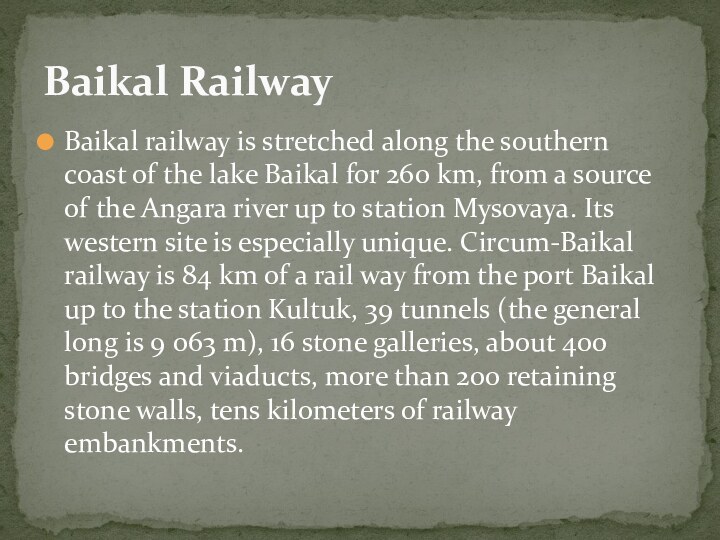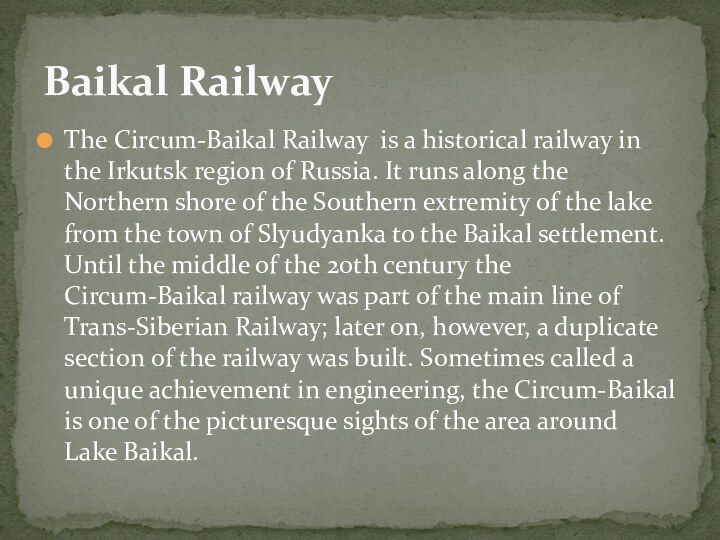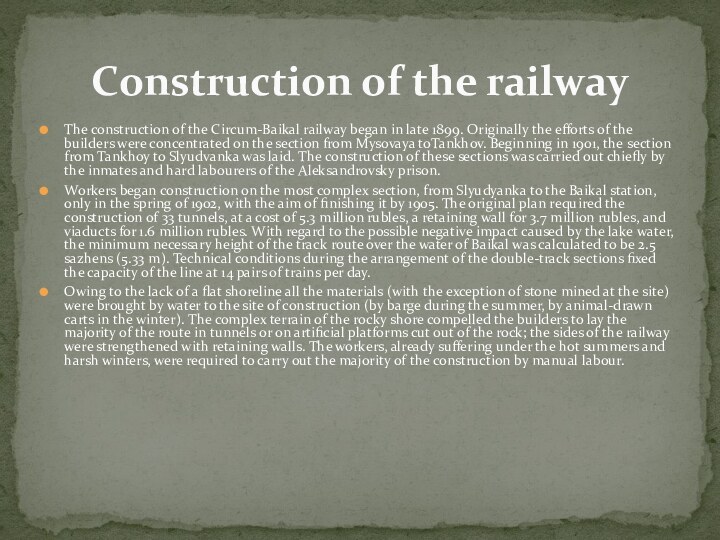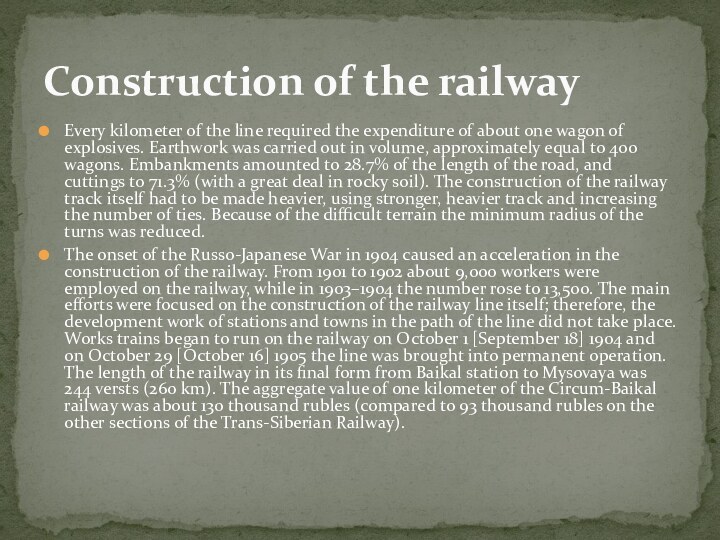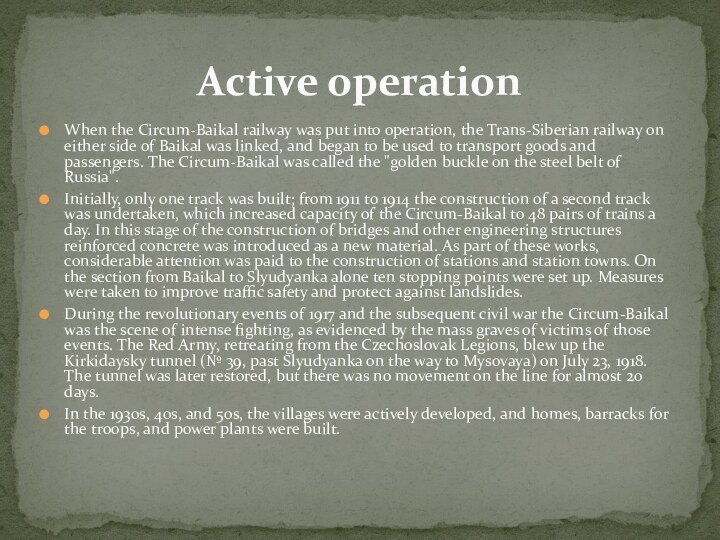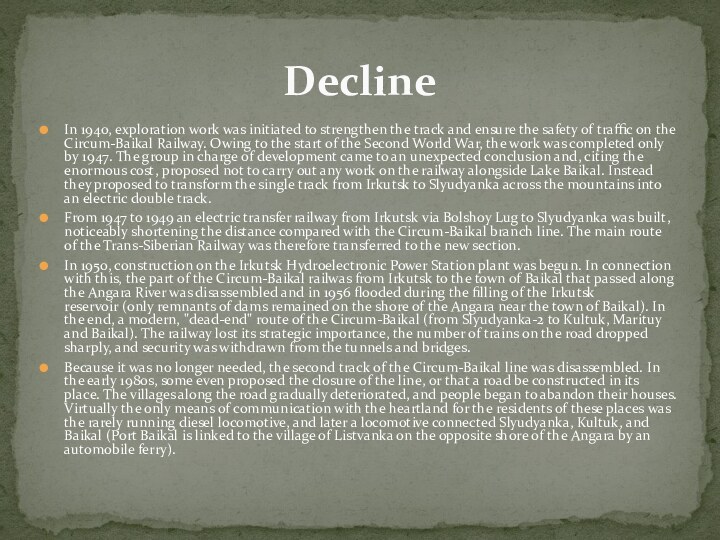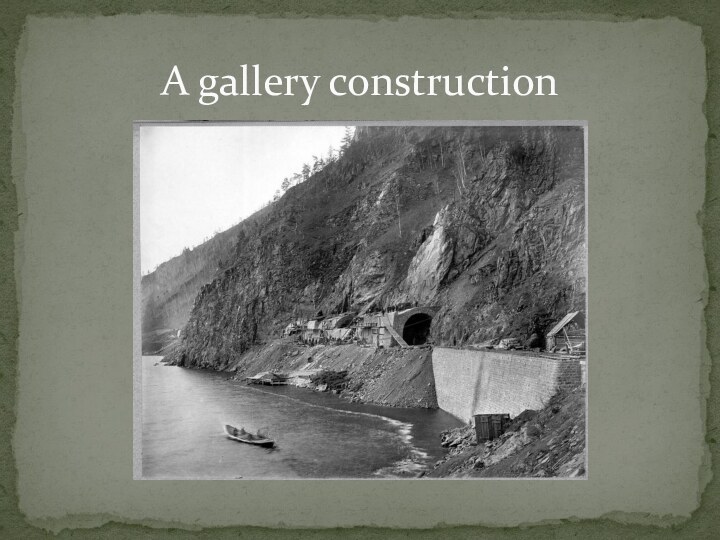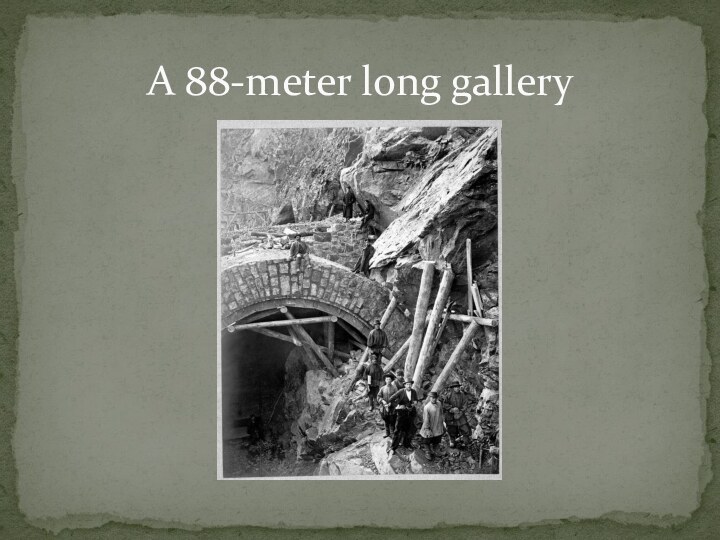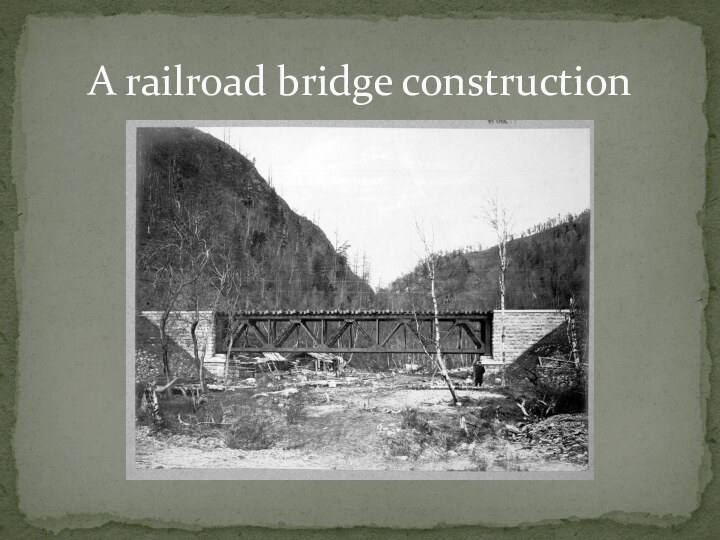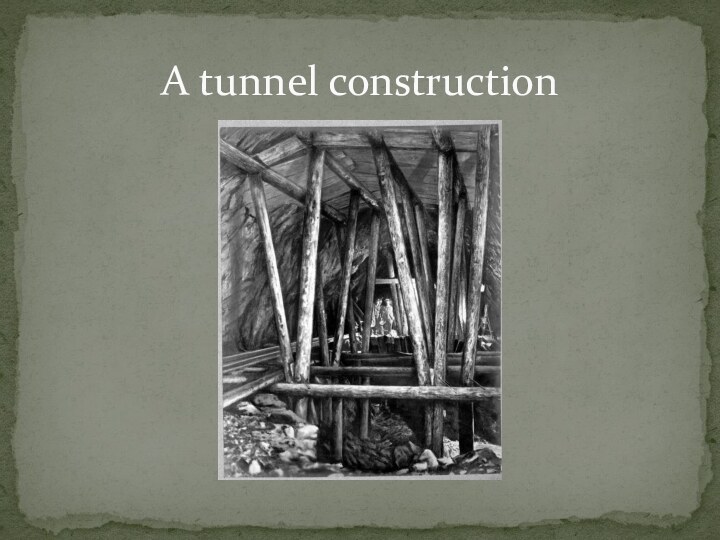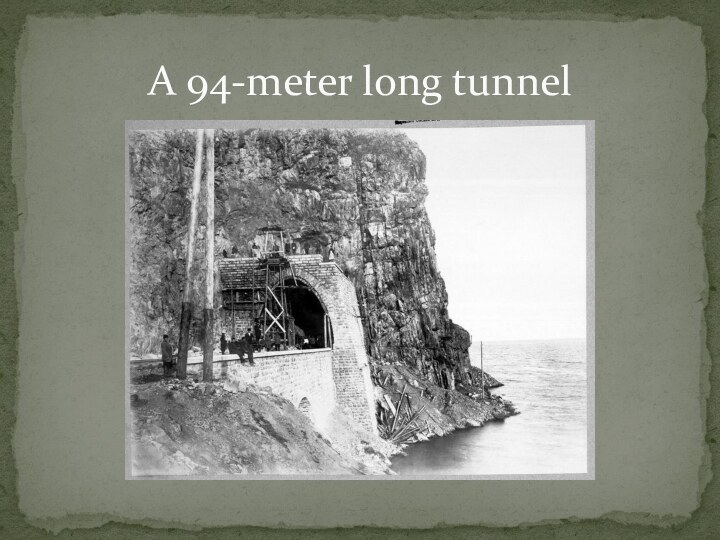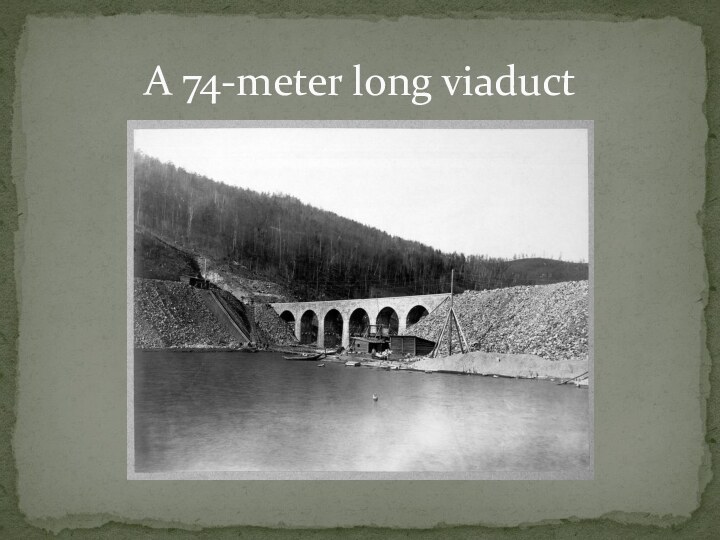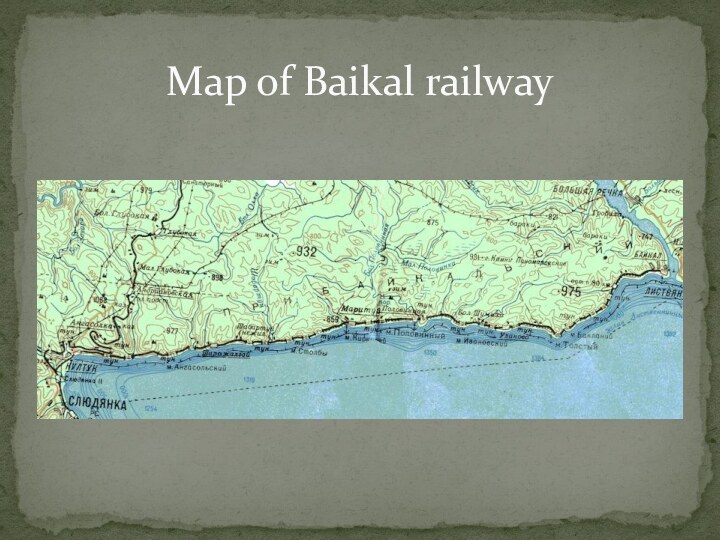the track and ensure the safety of traffic on
the Circum-Baikal Railway. Owing to the start of the Second World War, the work was completed only by 1947. The group in charge of development came to an unexpected conclusion and, citing the enormous cost, proposed not to carry out any work on the railway alongside Lake Baikal. Instead they proposed to transform the single track from Irkutsk to Slyudyanka across the mountains into an electric double track.
From 1947 to 1949 an electric transfer railway from Irkutsk via Bolshoy Lug to Slyudyanka was built, noticeably shortening the distance compared with the Circum-Baikal branch line. The main route of the Trans-Siberian Railway was therefore transferred to the new section.
In 1950, construction on the Irkutsk Hydroelectronic Power Station plant was begun. In connection with this, the part of the Circum-Baikal railwas from Irkutsk to the town of Baikal that passed along the Angara River was disassembled and in 1956 flooded during the filling of the Irkutsk reservoir (only remnants of dams remained on the shore of the Angara near the town of Baikal). In the end, a modern, "dead-end" route of the Circum-Baikal (from Slyudyanka-2 to Kultuk, Marituy and Baikal). The railway lost its strategic importance, the number of trains on the road dropped sharply, and security was withdrawn from the tunnels and bridges.
Because it was no longer needed, the second track of the Circum-Baikal line was disassembled. In the early 1980s, some even proposed the closure of the line, or that a road be constructed in its place. The villages along the road gradually deteriorated, and people began to abandon their houses. Virtually the only means of communication with the heartland for the residents of these places was the rarely running diesel locomotive, and later a locomotive connected Slyudyanka, Kultuk, and Baikal (Port Baikal is linked to the village of Listvanka on the opposite shore of the Angara by an automobile ferry).
Decline

